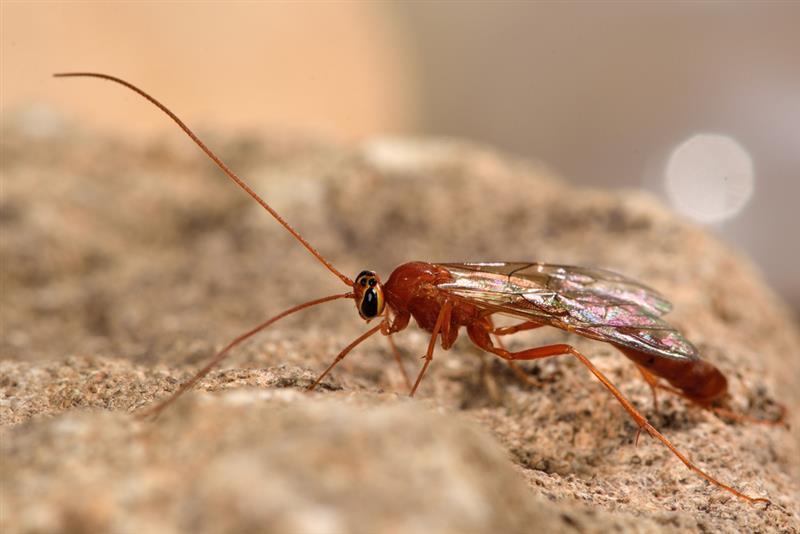Nocturnal Parasitoid Wasp Project Update

First set of data reveals exciting findings for Ryton Pools
From May to September 2024, Rangers at Ryton Pools Country Park were heavily involved in collecting nocturnal pasitoid wasps from our moth traps as part of a national research project headed by leading entomologists from the natural History Museum and University College London.
Parasitoid wasps comprise a large segment of insects belonging to the order hymenoptera (bees, wasps and ants). Females lay their eggs in or on insect or spider hosts (prey), then leave their developing offspring to feed on the host until adulthood, ultimately killing it. They are very important agents of biocontrol - many of the prey species are sawfly larvae and moth caterpillars which can reach pest proportions if left unchecked- and they form one of the most species-rich groups of insect in the UK with over 7000 species. Despite this, parasitoid wasps are hugely understudied and undersampled compared to many of their more popular insect counterparts. There is very little, if any, research regarding how parasitoid wasps are responding to climate change, habitat fragmentation and changes to host (prey) populations.
The aim of this project, supporting a PhD thesis by the Natural History Museum’s Iona Cunningham-Eurich, is to engage those who regularly operate moth light traps to help improve the national understanding of this important group. As some of this group of insects are nocturnal and come to light, moth traps are a good way of collecting them.
We have been very busy collecting wasps of the bright-orange-coloured ‘Sickle Wasps’ from our moth traps whenever they were operated during the required months in 2024.
We can now reveal the first set of data from the project is complete, with some very exciting initial findings. Ryton Pools contributed almost 8% of the wasps recorded for this national project and initial identifications have revealed sixty-four new species for the Ryton Pools site list. Little is currently known about the life history and habitat requirements for many of these species, and further research is now being conducted into the species discovered with more context to be added to the records in the coming months.
The list so far includes eighteen and nine species respectively of the main Ophion and Netelid genera, with the biggest surprise being species from a further twenty genera discovered, making Ryton Pools an incredibly diverse site for this group.
Of particular note was over ninety recorded individuals of the diminutive Homolobus annulicornis. There are currently only two previous British records for this species from 2021 and 2024, both of which currently sit in the natural History Museum collections.
This project has allowed for further partnership working with the Natural History Museum with Dr. Gavin Broad, Principal Curator of Hymenoptera, taking many of the tiny parasitic wasp specimens from our Malaise Trap sampling over the last few years for identification.
We will aim to keep you updated as further data comes in from this exciting project.



